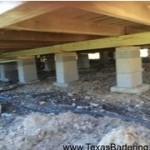CLIMATE REACTION
Climate + Soil Type Reaction: Over the past 10 years, Texas has experienced an overall imbalanced climate. There have been excessive periods of hot weather and drought combined with brief periods of excessive rains. The nature of our soil makes it highly reactive to these changes. Soils will swell briefly during the rains and then contract excessively during heat and drought.

INAPPROPRIATE DRAINAGE
Inappropriate drainage: Many homes experience problems during or immediately after rains. Though most houses are developed with a drainage plan in place, there can be ongoing changes that negatively affect drainage patterns. When you begin experiencing foundation problems, it’s important to take note of any place standing water accumulates during rain.
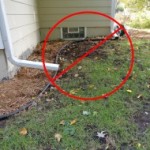
PLUMBING SYSTEM OR IRRIGATION FAILURE
Plumbing System or Irrigation System failure: Leaky pipes either under or outside the home can cause big problems for a homes foundation. Depending on the extent and or stage of the problem, a leak can cause soil to heave or erode away. Either effect will impact the foundation of your house significantly.
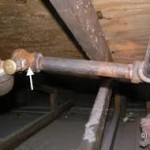
INADEQUATE CONSTRUCTION/FAILED PAST REPAIR FAILURE
Inadequate Construction/Failed past repair: We encounter homes experiencing problems as a result of an inadequated construction. If you don’t follow the construction standards and inspection requirements, your house can easily result in lots of foundation problems. We also see many homes experiencing new foundation problems as a result of past foundation repairs previously attempted.
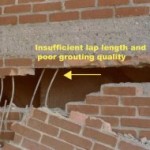
GRADING PROBLEMS
Grading Problems: Before the foundation is constructed, most lots are leveled with new soil. Failure to properly compact or treat this soil, can result in recession or erosion over time. Receding soil and erosion can both be contributing factors of foundation failure.
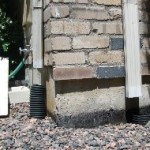
TREE ROOTS
Tree Root/Landscape problems: As trees and other plants grow, their need for water can deplete the balance of water under the home. At one point this can cause excessive soil under the house, which can cause to foundation sinking and failure.
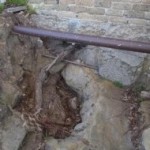
BOWING WALLS
Bowing walls occur most often due to the force of hydrostatic pressure. Hydrostatic pressure occurs when water presses against the basement walls, causing the weight against the walls to exceed their capacity. Walls can also bow and fail when expansive clays or frost cause expansion of the soils to fatigue and damage the wall.
Problems in a home’s foundation can lead to larger structural problems, possibly causing an unsafe living environment. Being able to identify the most common foundation problems may make it possible to repair damage before it becomes more serious. The three most common foundation problems are bulges and bowing, cracking, and leaks.
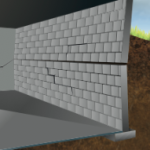
UNEVEN FLOORS
Sometimes a sloping or uneven floor is hard to even notice. Other times you can take a ball or marble, put it on the floor, and it will roll down the sloping surface, it is that severe. Sloping, uneven floors are a problem that occurs when your foundation has settled or sunk unevenly. It is oftentimes one of a number of problems that will occur when your foundation has settled. If you notice your floors are sloping it would be recommended to inspect the rest of your home or business’ foundation, slab, basement, or crawlspace to see if the other foundation failure signs are present.
Most common cause for sloping & uneven floors
Sometimes when settlement occurs it happens unevenly. These can cause floors to slope or become uneven. Foundation settlement is when there is downward movement of a building or structure so that is below it’s original position. Soil can shift, move, or become compacted due to a multitude of issues, here are the following most common problems:
1.-Soils that are weak bearing
2.- Poorly compacted soils
3.- Changes in the level of moisture of the soil beneath the foundation
4.- Soil consolidation
When you floor is sloping or uneven, this is a sign that you have a serious foundation problem. You should definitely contact Millenium Foundation Repairs to inspect your foundation to find the right solution.
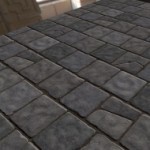
WALL CRACKS
Most small cracks in drywall or plaster walls are not serious and are caused by seasonal expansion and contraction of the wood framing in your house over time. They’re often found at the corners of window and door frames, and can be patched using spackling or joint compound.
Larger cracks in your walls, however, can indicate structural or foundation problems. If the cracks in your walls exhibit these characteristics:
The crack has a 3/16” or wider gap.
One side of the wall is higher than the other.
Your doors no longer close in the frame.
You may have a structural problem and should have your house examined by a foundation specialist.
Our specialist at Millenium Foundation Repairs can help you and guide you what to do in this situations.
How to determine if crack in walls are serious:
1.-Horizontal Cracks
To determine how serious a wall crack might be, it’s best to examine the shape of the crack and the direction it runs on the wall. If the crack is vertical and starts near the apex where the wall and ceiling meet, it might be a sign that it was created when the foundation settled after construction.
2.- Stair-Step Cracks
A stair-step crack looks like a flight of stairs and runs in both vertical and horizontal directions across the wall.
3.- Doors and Windows
Another way to test the seriousness of a wall crack is to open and close internal doors to bedrooms and bathrooms and evaluate whether the doors stick.
4.- Visible Nails
Study the wall area surrounding the crack and look for nail heads or screw heads that might be visible on the surface of the wall.
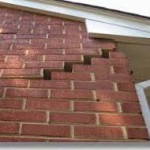
SAGGING BEAMS
Settling columns, sagging beams and sagging floor joists within a crawlspace can lead to extensive cosmetic and structural damage in a home if left uncorrected. Symptoms such as sloping floors and cracks in drywall are common when additional support systems are needed within a crawlspace.
Settling of columns in a crawlspace is most often caused by weak foundation soils. Over time, these soils shift and settle with changes in moisture content and density, causing movement of the columns and the beams above.
